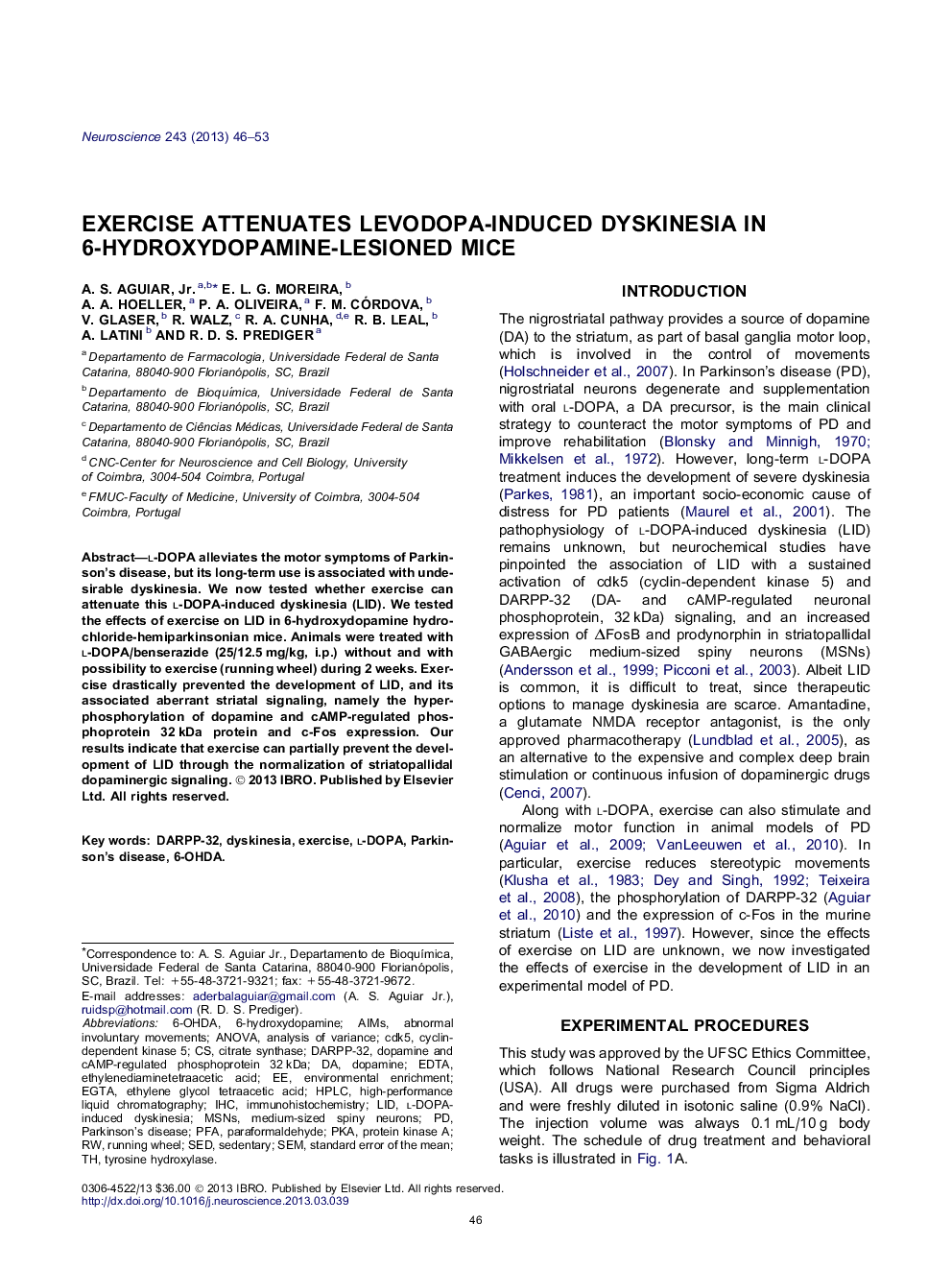| Article ID | Journal | Published Year | Pages | File Type |
|---|---|---|---|---|
| 4338001 | Neuroscience | 2013 | 8 Pages |
•Long-term l-DOPA induced dyskinesia in hemiparkinsonian animals.•Voluntary exercise showed antidyskinetic effects.•The abnormal movements of the trunk and limbs were attenuated, but not orofacial.•Exercise prevented abnormal dopaminergic signaling in the striatum of dyskinetic mice.
l-DOPA alleviates the motor symptoms of Parkinson’s disease, but its long-term use is associated with undesirable dyskinesia. We now tested whether exercise can attenuate this l-DOPA-induced dyskinesia (LID). We tested the effects of exercise on LID in 6-hydroxydopamine hydrochloride-hemiparkinsonian mice. Animals were treated with l-DOPA/benserazide (25/12.5 mg/kg, i.p.) without and with possibility to exercise (running wheel) during 2 weeks. Exercise drastically prevented the development of LID, and its associated aberrant striatal signaling, namely the hyperphosphorylation of dopamine and cAMP-regulated phosphoprotein 32 kDa protein and c-Fos expression. Our results indicate that exercise can partially prevent the development of LID through the normalization of striatopallidal dopaminergic signaling.
Graphical abstractFigure optionsDownload full-size imageDownload high-quality image (67 K)Download as PowerPoint slide
